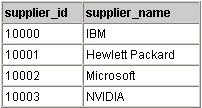How to create your Project Charter Step by Step
The Project Charter describes the project vision, objectives, scope, organization and implementation plan. It helps you to set the direction for the project and gain buy in from your stakeholders as to how the project will be organized and implemented. It will also help you to control the scope of your project, by defining exactly what it is that you have to achieve. To define a Project Charter, these are the steps which needs to be taken carefully:
Step 1: Identify the Project Vision
Vision: The first step taken when defining a Project Charter is to identify the project vision. The vision encapsulates the purpose of the project and is the defined end goal for the project team.
Objectives: Then based on the vision, list three to five objectives to be achieved by the project. Each objective should be Specific, Measurable, Achievable, Realistic and Time-bound (SMART).
Scope: With a clear view of the Vision and Objectives of the project, it's time to define the project scope. The scope defines the formal boundaries of the project by describing how the business will be changed or altered by the project delivery.
Deliverables: Then you need to describe each of the deliverables that the project will produce.
Step 2: Describe the Project Organization
The next step is to identify how the project will be structured by listing the customers, stakeholders, roles, responsibilities and reporting lines.
Customers: First, identify the project customers. A customer is a person or entity that is responsible for accepting the deliverables when the project is completed.
Stakeholders: Then identify the project stakeholders. A stakeholder is a person or entity within or outside of the project with a specific key interest or stake in the project. For example, a Financial Controller will be interested in the cost of the project, and a CEO will be interested in whether the project helps to achieve the company vision.
Roles: Now list the key roles involved in delivering the project. Examples of roles include the Project Sponsor, Project Board and Project Manager. Then summarize each of the primary responsibilities of each role identified.
Structure: Once you have a clear view of the roles needed to undertake the project, you can depict the reporting lines between those roles within a Project Organization Chart.
Step 3: Plan the Approach to Implementation
You now have a solid definition of what the project needs to achieve and how it will be organized to achieve it. The next step is to describe the implementation approach as follows:
Implementation/Project Plan: To provide the Customer and Stakeholders with confidence that the project implementation has been well thought through, create an Implementation Plan listing the phases, activities and timeframes involved in undertaking the project.
Milestones: In addition, list any important milestones and describe why they are critical to the project. A milestone is typically an important project event, such as the achievement of a key deliverable.
Dependencies: List any key dependencies and their criticality to the project. A dependency is defined as an activity that is likely to impact on the project during its life cycle.
Resource Plan: Create a plan which summarizes the resources involved in undertaking the project by listing the labor, equipment and materials needed. Then budget the financial resources needed.
Step 4: List the Risks and Issues
The final step taken to complete your Project Charter is to identify any project risks, issues, assumptions and constraints related to the project and to devise risk mittigation strategy .
And that's it. If you complete each of the steps above, then you will create a solid Project Charter for your project, helping you to manage scope and deliver consistently on time and within budget.

Comments
Post a Comment